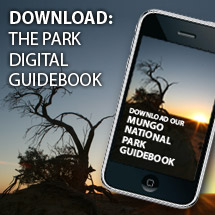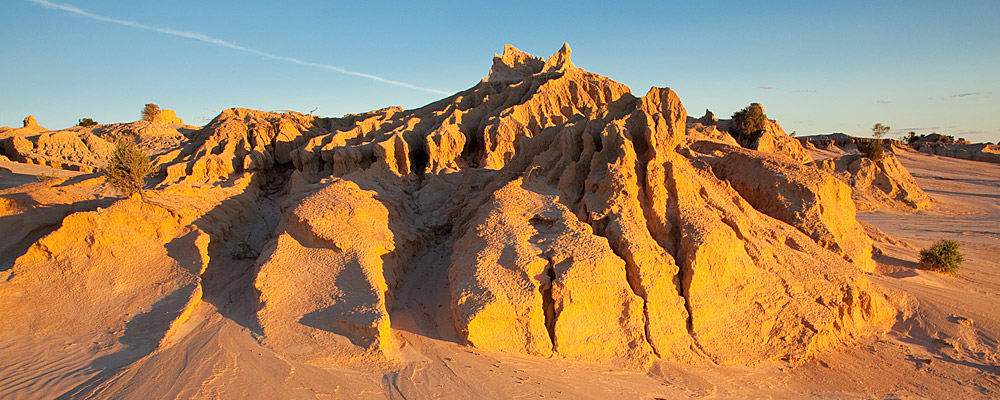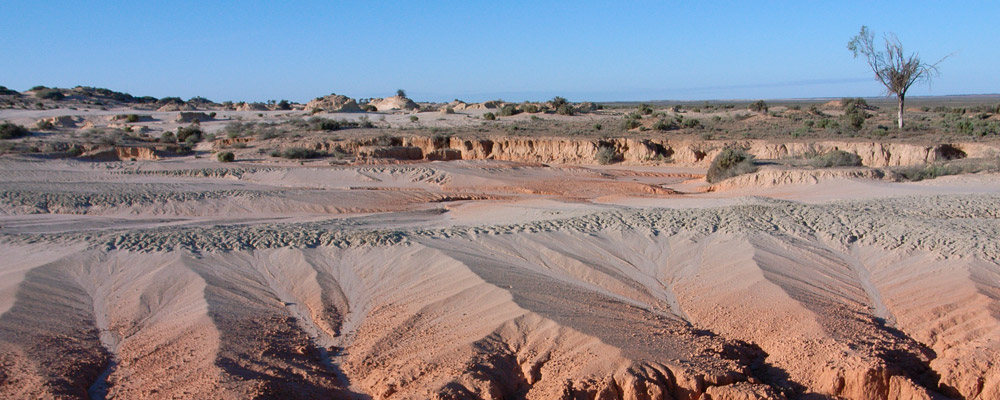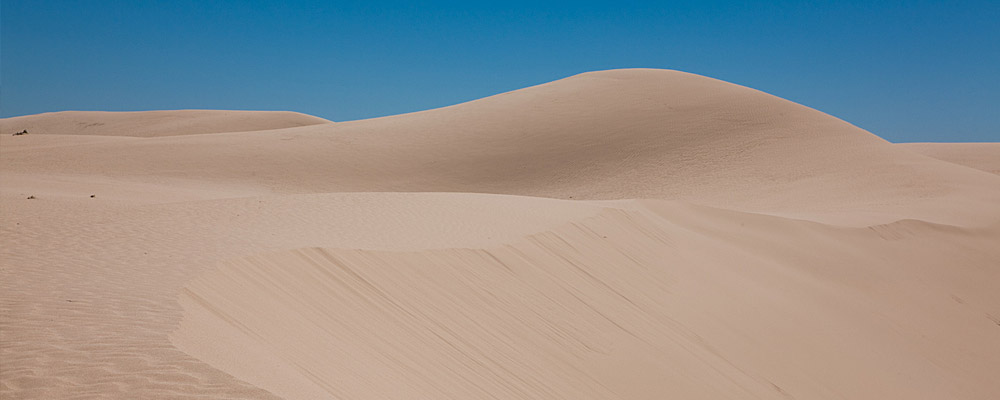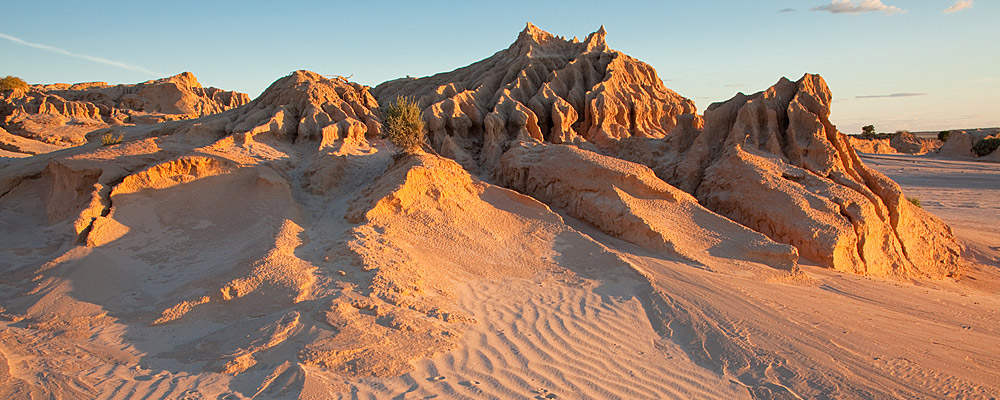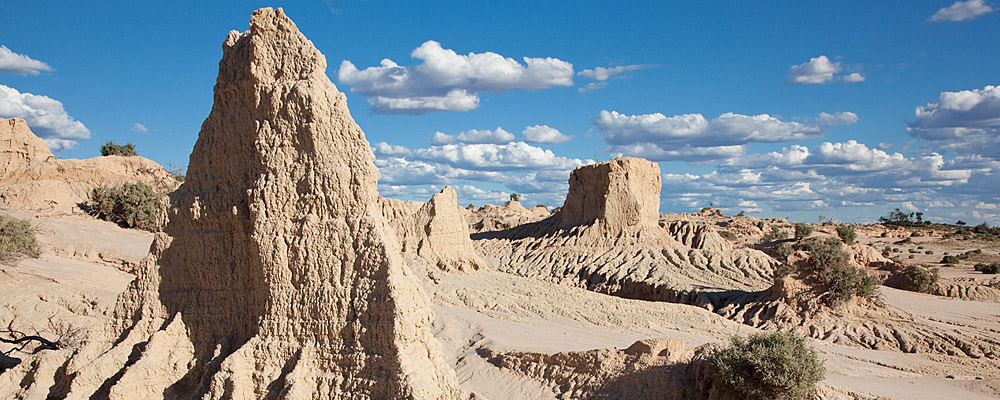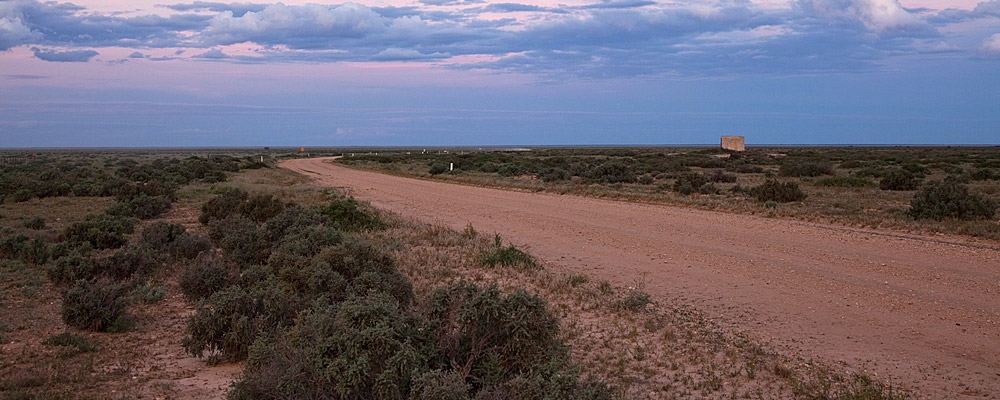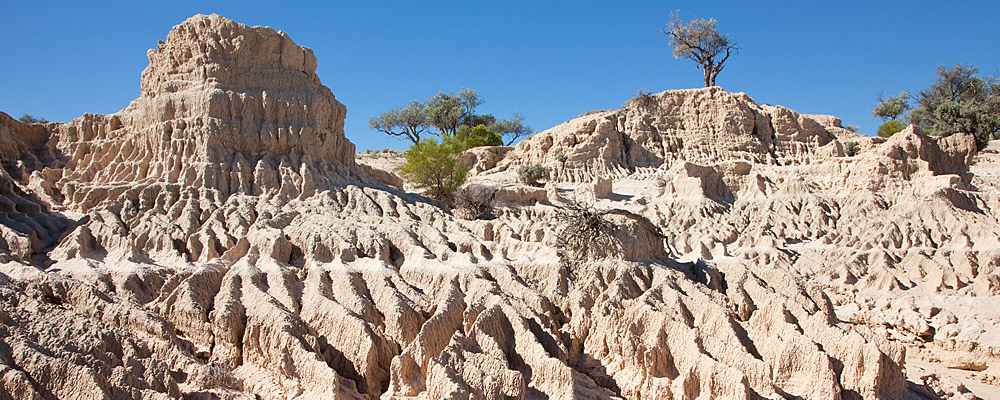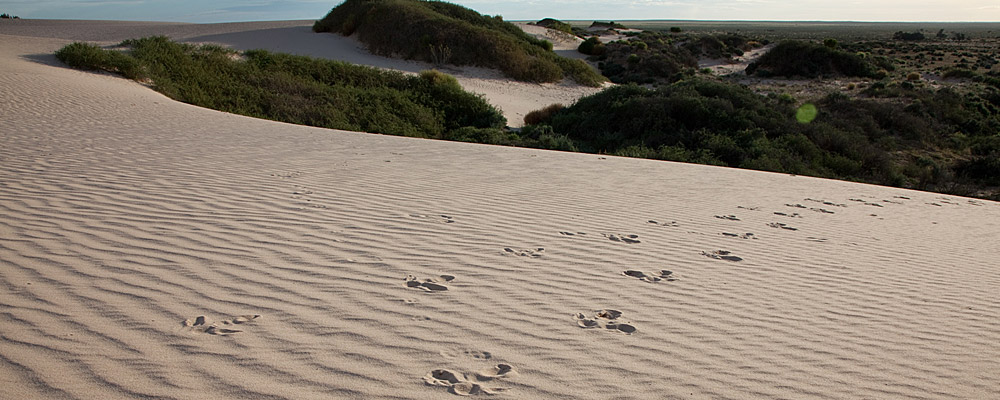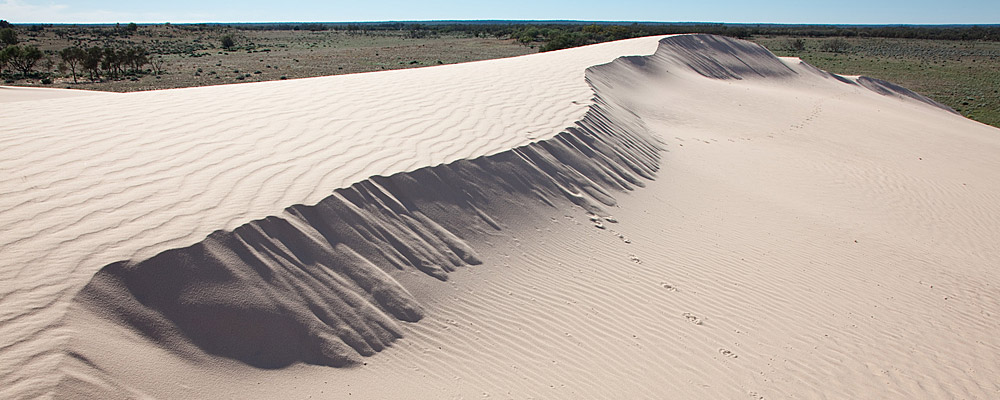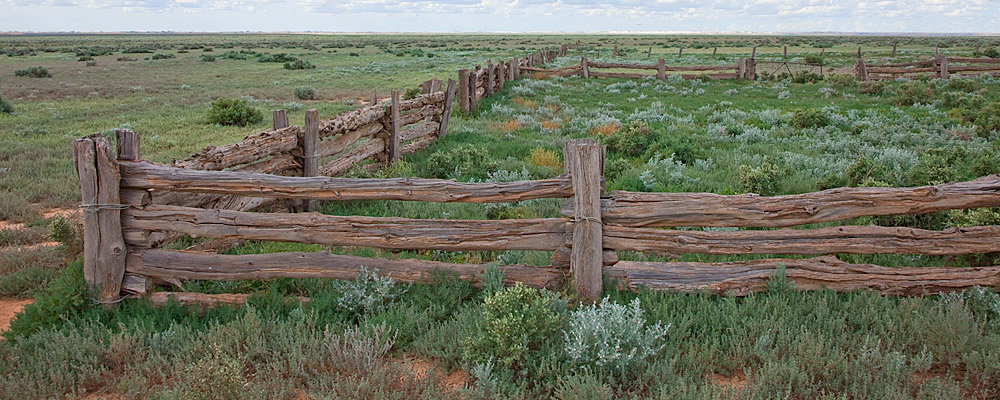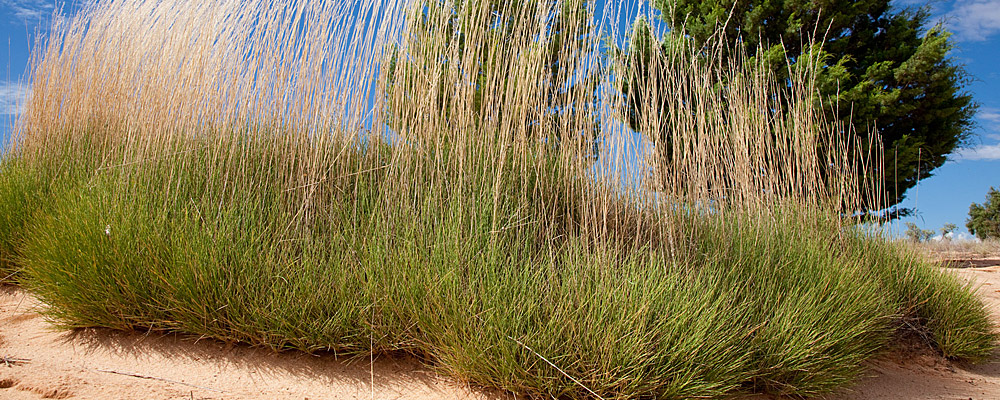Understand Mungo
Mungo's Environment Today
Plants

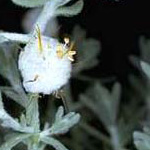
Eight main plant communities are represented in Mungo National Park and are distributed according to soil type and conditions of drainage and salinity.
Grasslands/herblands
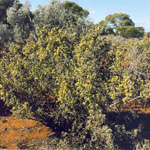
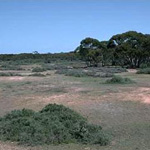
Tussock grasslands of Eragrostis australasica occur in wetter areas of the lake bed. On scalded areas an annual herbland dominated by Atriplex lindleyi has developed, with associated species including Dissocarpus paradoxus, Osteocarpum acropterum v. deminuta, Sclerolaena divaricata, and Maireana ciliata.
Bluebush/saltbush shrublands

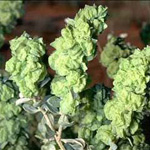
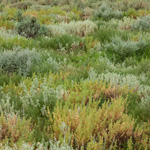
This community occurs mostly on the dry lake beds. Dominant species include Atriplex holocarpa, Old Man Saltbush (A. nummularia), A. vesicaria, Chenopodium curvispicatum, C. nitrariaceum, Ruby Saltbush (Enchylaena tomentosa), Maireana georgei, M.pyramidata, M. sedifolia, Muehlenbeckia florulenta and Nitraria billardieri.
Most of these shrubs are members of the chenopod family, a group that has evolved to survive in harsh conditions of drought and salinity. As a result, chenopod shrublands occupy vast areas of inland Australia.
Some saltbushes are perennial shrubs ranging from 20 cm to 150 cm in height, with ascending or descending woody branches and small, cylindrical, fleshy leaves. The ruby saltbush (Enchylaena tomentosa) bears a small tomato-like berry up to 6 mm in size that can vary in colour from red to orange to yellow and can be safely eaten. Other forms of saltbush can grow up to two metres high with a diameter of 3 to 4 metres. These species can have tangled or ascending and descending branches with flat leaves of which the margins or outer edges can be smooth or toothed.
Mixed shrubland
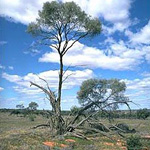
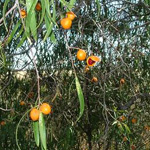
This is the main community on the lunette, with mallee (Eucalyptus spp.), cypress pine (Callitris spp.), Butterbush (Pittosporum angustifolium), Sandhill Wattle (Acacia ligulata), Needlewood (Hakea leucoptera), Rosewood (Alectryon oleifolius ssp.canescens), Black Bluebush (Maireana pyramidata), grasses and herbs.
White Cypress Pine (Callitris glaucophylla) woodland

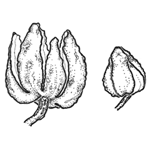
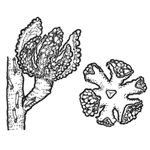
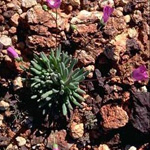
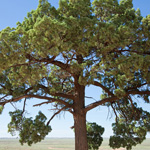

Pine woodland occurs mainly on deep red sandy loam country on the western side of the dry lakebeds. The herb and grass understorey species include Actinobole uliginosum, Calandrinia eremaea, Calotis hispidula, Crassula colorata v. acuminata, Rhodanthe moschata, Tetragonia moorei and Zygophyllum ammophilum.
Three species of cypress pine occur in the park and vary in colour:
- Mallee Cypress Pine (Callitris verrucosa)
- has blue-green foliage and densely warted cones;
- Murray Cypress Pine (C. gracilis)
- has olive-green foliage and slightly larger cones;
- White Cypress Pine (C. glaucophylla)
- has blue-grey to blue-green, scale-like foliage.
The cypress pine is renowned for its resins, which resist rot and termite attack. It was these qualities that made it so popular for fence posts, house and shed stumps, and wall and floor boards. The seeds from the young cones are a popular food for Pink Cockatoos. Mature pine communities can be seen on the Foreshore Walk.
Belah (Casuarina pauper)/Rosewood (Alectryon oleifolius ssp. canescens) open woodland
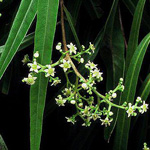
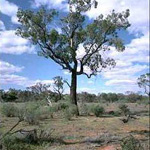
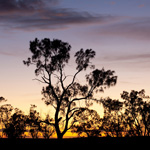
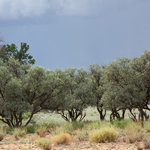
This woodland occurs on the gently undulating sandplains of brown loamy sands, in association with Myoporum platycarpum ssp. platycarpum and Wilga (Geijera parviflora), with an understorey including Enchylaena tomentosa, Chenopodium curvispicatum, Black Bluebush (Maireana pyramidata) and Sclerolaena patenticuspis.
Mallee open-shrublands
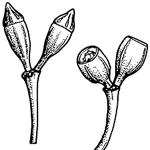
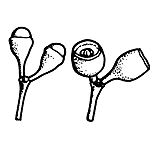
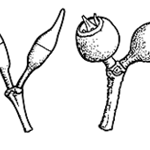
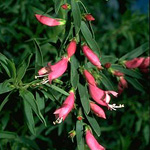
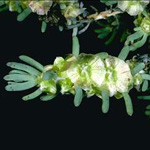
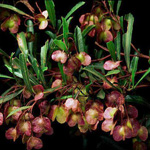
The mallee shrublands of Mungo occur on sandy loam interdune plains and are dominated by a mix of mallee eucalypts, including Yorrell (Eucalyptus gracilis), White Mallee (E. dumosa) and Red Mallee (E. socialis). Understorey plants include Atriplex stipitata, Narrowed-leaved Hopbush (Dodonaea viscosa ssp. angustissima), Eremophila glabra, Maireana pentatropis and Enchylaena tomentosa.
The word mallee comes from an Aboriginal word for eucalyptus trees that are multi-stemmed from their base. Another feature of mallees is the lignotuber. This is an underground woody structure that stores water and nutrients, allowing the mallee to survive in semi-arid rangelands and to resprout after bush fire. The term mallee is now also used to describe communities of mallee eucalypts. You can see a variety of mallees identified with signs on the Mallee Walk.
Mallee open-shrublands with spinifex (Triodia scariosa)
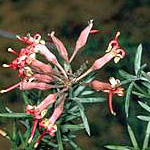
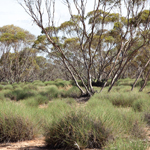
This community occurs on the east-west sand ridges of shallow sands overlying sandy clays. Associated shrubs include Narrowed-leaved Hopbush (Dodonaea viscosa ssp. angustissima), Maireana pentatropis, Eremophila glabra and Grevillea huegelii. This community can also be seen on the Mallee Walk and nearby along the Mungo Track.
Acacia open-woodland/open-shrubland
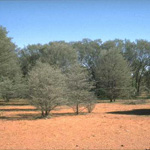
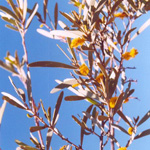
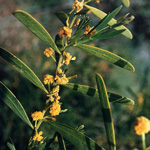
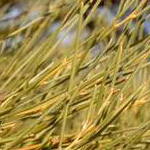
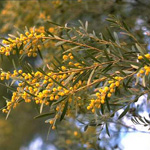
Acacia communities occur in isolated pockets of the sandplains on heavier soils. The dominant shrubs are Mulga (Acacia aneura), Yarran (A. melvillei - listed as vulnerable species under the NSW TSC Act), Nelia (A. loderi - listed as vulnerable species under the NSW TSC Act) and A. ligulata. The understorey is a mixture of native and exotic herbs and grasses.
